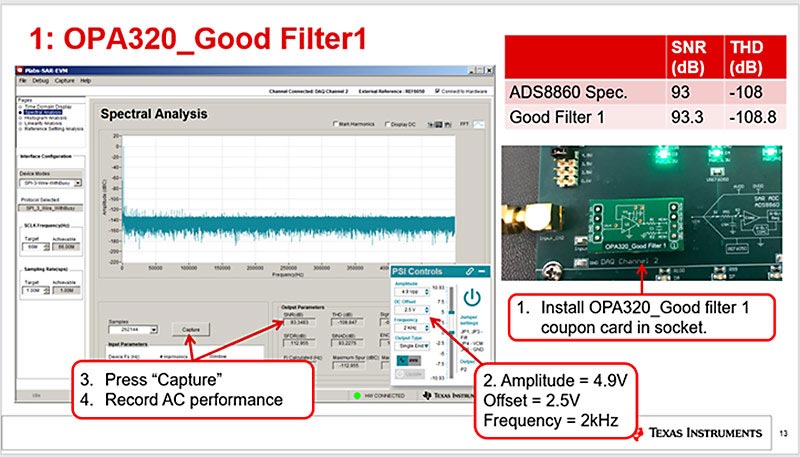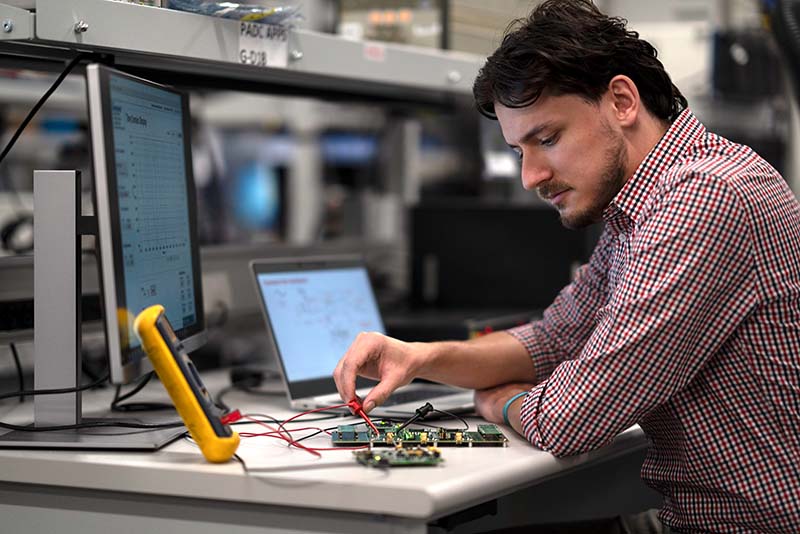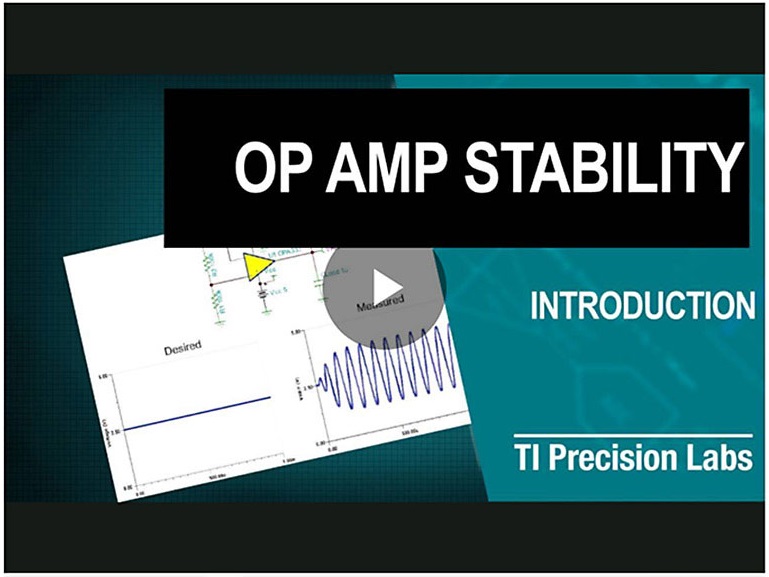SSZT094 march 2022
Whether it excites or bores you, continued learning is a necessary part of life. Semiconductors and electronics invite constant learning; I personally enjoy exposure to new material and ideas. The field of electronics contains an abundance of textbooks, research and experiences, and choosing among them can be difficult and time-consuming. My TI journey began with a resource created to guide this learning process: TI Precision Labs.
An Immediate Benefit to Your Workflow
In summer 2019, I joined Texas Instruments as an applications engineering intern; my training requirements included TI Precision Labs. This training series includes videos and downloadable reference materials to help deepen an engineer’s technical expertise at all experience levels. Many of the videos are topic-based, while others address a design issue or common circuit type.
Since my internship involved supporting high-speed amplifiers, the first TI Precision Labs series I completed was focused on operational amplifiers (op amps). Over the summer, I went from someone who had a passable amount of university-specific analog circuitry knowledge into a much more informed op-amp user. Since much of my business group’s support work involves circuit stability issues that cause overshoot and oscillations at the amplifier output, I focused on stability lectures, as shown in Figure 1.
I began to recognize the value of TI Precision Labs, both as an internal training tool and as an external resource, in my day-to-day work. The series became a recurring part of my workweek as I used the examples and instruction to better my engineering skills in the discipline. Sometimes I would learn about a concept in the morning and answer a related customer question later that same day!
Once I changed product lines as part of my rotation program, I watched analog-to-digital converter (ADC) TI Precision Labs videos to train myself on digital communication signals and data-converter types. ADCs are fairly complex; even after rotating through the precision ADC group, I am still learning as I interact with data converters while supporting op amps. I often revisit TI Precision Labs content to improve my familiarity with a topic. In particular, the section of videos on driving a successive approximation register (SAR) ADC remains crucial to my engineering support work, as shown in Figure 2.
 Figure 2 SAR ADC Amplifier Settling
Lab
Figure 2 SAR ADC Amplifier Settling
LabHow TI Precision Labs Complements University Knowledge
At first glance, a TI Precision Labs lecture can appear similar to a university lecture; the difference is the end goal for the material. While university courses often attempt to cover everything about a subject and move very quickly, TI Precision Labs contains relevant information for each topic discussed at a reasonable pace. As a recent college graduate, I value TI Precision Labs’ ability to succinctly convey information to end users.
TI Precision Labs lectures:
- Are often less than 10 minutes long.
- Are broken into subsections and multiple videos.
- Contain clear narration, captions and steady pacing.
- Avoid most derivations and proofs.
- Provide directly applicable information.
- Include quizzes and example problems at the end of videos or in supporting documents.
- Offer lab exercises with SPICE models or lab hardware.
The self-directed nature of TI Precision Labs gives you the flexibility to prioritize work projects and return to where you left off later. The content also enables various learning styles; I tend to switch between working through a full video series and watching single lectures as needed.
TI Precision Labs Short Guide
Each TI Precision labs lecture contains supporting materials such as lecture slides, quizzes, exercises, hands-on virtual bench labs and SPICE models. You can engage with every piece of content or choose exactly what you need. For example, I never skip quiz questions; I find that it helps correct assumptions that I (or many other many engineers) have.
Figure 3 showcases TI Precision Labs hardware, with me using lab equipment.
 Figure 3 The Author Using TI Precision
Labs ADC Hardware
Figure 3 The Author Using TI Precision
Labs ADC HardwareReady to try out TI Precision Labs? Start your learning journey by following this guide:
- Go to TI Precision Labs with your browser of choice.
- Select your product type or area to study.
- Select a topic within the area of study.
- Choose which lecture to watch – I recommend starting with the first video in a series.
- Watch the lecture and take notes!
Conclusion
I encourage you to make TI Precision Labs part of your workflow and continued learning. The engineers who create TI Precision Labs videos continuously validate its quality and remain accessible as resources for your questions and designs. Whether through TI Precision Labs, email, phone or the TI E2E™ design support forums, TI engineers are proud to have impact on your designs and projects.
